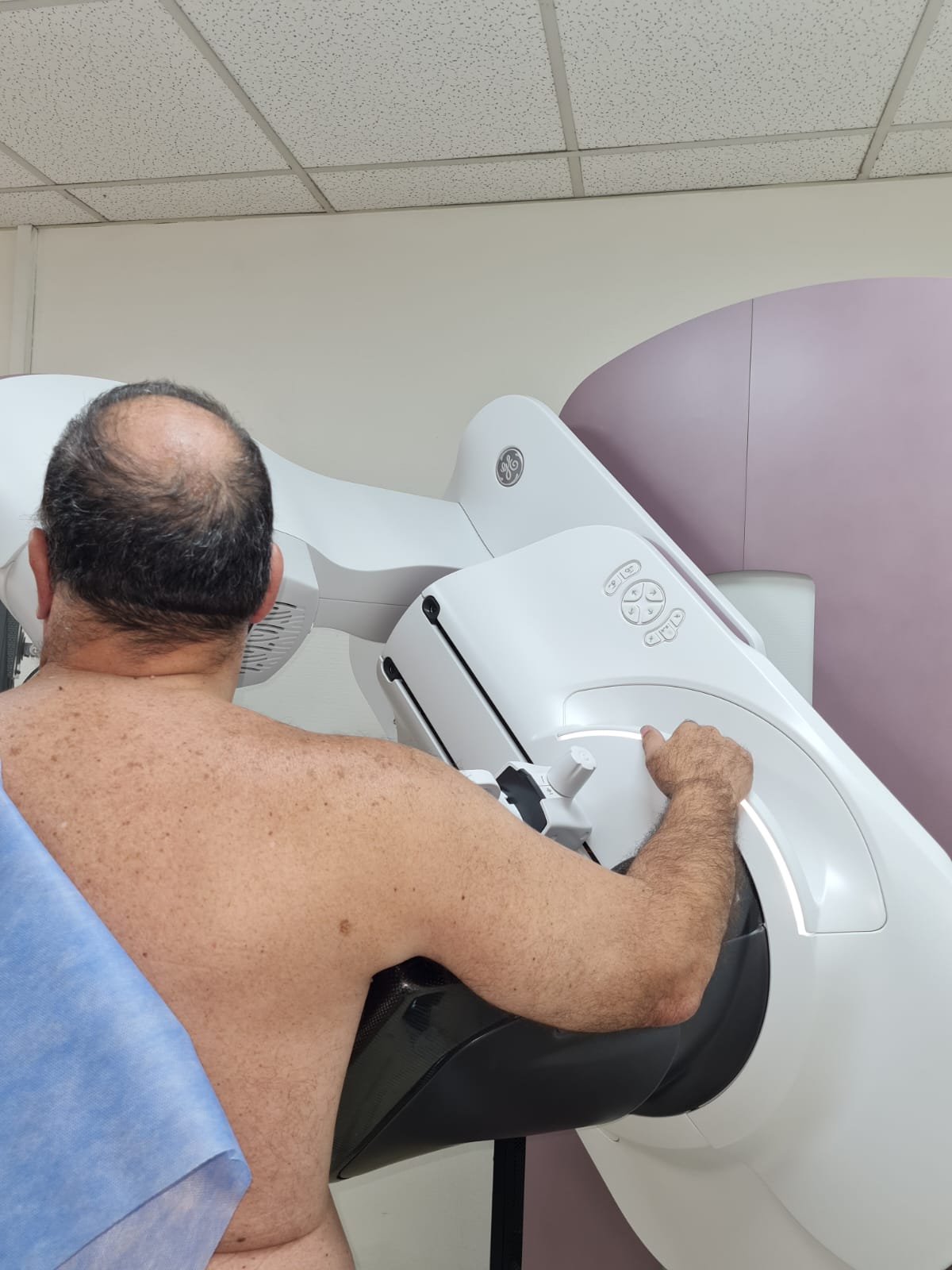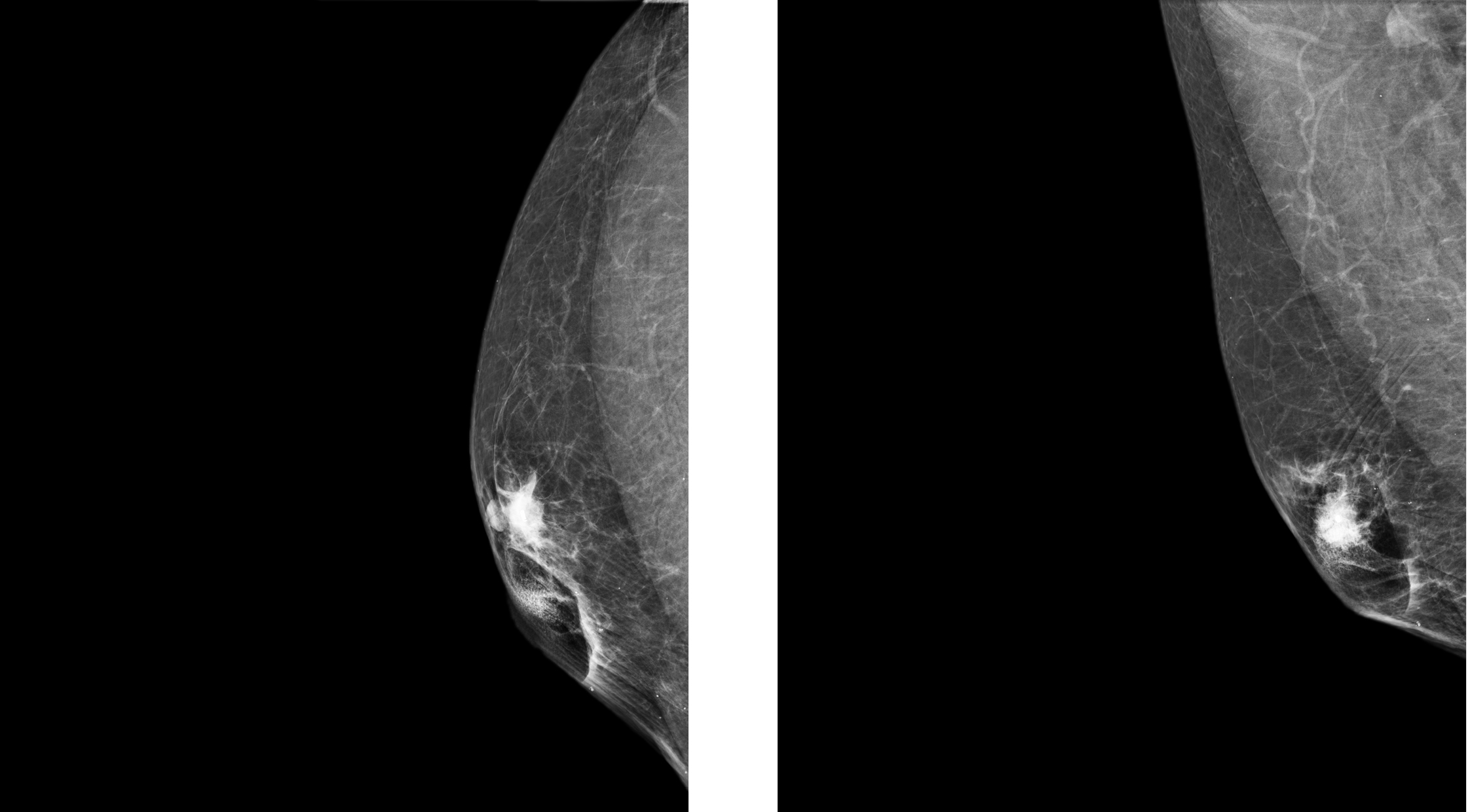Breast cancer in men is a rare disease, representing only 1% of all malignant tumors in men. This figure is significantly smaller than in women, but it is no less important for that. Scientists and specialists are still debating why this difference is due, but many believe that it is related to breast development.
Although less common, breast cancer in men can be deadly. According to the American Cancer Society, more men are estimated to die in 2023 in the United States as a result of Breast Cancer (530 deaths in ~2,800new cases of invasive breast cancer)[i] than Testicular Cancer (470 deaths in ~9,190 new cases of testicular cancer).[ii]
The question then is, do men know that they should get checked for early identification of breast cancer?
"In many cases, no," answers Dr. Flavia Sarquis, Head of the Mammary Diagnosis and Intervention Service at Diagnóstico Maipú, a renowned Medical Institution located in the City of Buenos Aires, Argentina. In her position, Dr. Sarquis has been educating men and women alike on the importance of early diagnosis. “Unfortunately, we see that especially in men, there are certain social barriers that prevent them from doing the relevant evaluations on time. In many cases it is because it is a disease that is generally associated only with women, others because of a lack of knowledge, which is why outreach and education campaigns are so important."
This is where more and more questions arise. Who should follow these protocols? Which doctor should help guide men to know whether they should get screened? Which are the steps to follow?
"The answer is very simple. Although breast cancer is less frequent in men than in women, the risk factors, the evaluation, the diagnosis and the treatment are similar for all, because the disease develops in the breast tissue”.
What are the risk factors that should be considered?
More and more it is known that the risk factors are diverse and may be related to family history (genetic syndrome), environmental issues or even with specific aspects of each individual (obesity, liver diseases, among others), with the prolonged use of some medicines high in hormones, or even race or ethnicity can generate a greater predisposition.
“General Physicians are the ones who must evaluate the clinical history of each patient and with that information provide the corresponding referrals or exams. This recommendation already exists in the International Breast Health Guidelines. It is not something that can identify the person based on a single variable or information. Surely if we ask most men if they have consulted with their general practitioner about it, or if they have ever been to a breast specialist, the answer would be no. This is one of the myths related to this disease that we must put an end to.”
Early detection of breast cancer in men is as key as in women, therefore prevention and timely evaluation are critical to increase survival rates.
Although it may surprise you, for the diagnosis of breast cancer in men the same technology and technique is used as for women. Technology has come a long way in recent years. Today we have ultrasound and mammography systems that allow us to obtain images of the highest quality. Additionally, nowadays other factors are taken into account to enhance the comfort and safety of patients. The GE HealthCare equipment that we have at Diagnóstico Maipú has less radiation dose[iii] than the equipment we used before and it also provides great comfort and enables diagnostic precision for the patient.[iv] Mammography now come in different contrast levels with a strong diagnostic performance for any type of breast, even with implants. The comfort of the patient is increasingly a variable of consideration when developing new technologies, to the point that GE HealthCare has an accessory, the "Patient-Assisted Compression," that allows the patient to regulate the intensity of the compression of the breast. In addition, the incorporation of artificial intelligence into breast imaging equipment has been a key innovation in recent years as well. Among its potential advantages: great diagnostic accuracy, reduction in false positives, identification of the population at risk, workflow optimization, helping improve the performance of the radiologist. Some of this can enable greater patient confidence in the exams, and therefore provides them with a greater predisposition to get breast imaging.
For men, signs and symptoms of male breast cancer may include:
- Lumps detectable to the touch
- Inflammation of the mammary area
- Changes in the shape and size of the breasts
- Changes in the orientation of the nipple
- Redness or darkening of the skin around the areola or nipple.
- Orange peel: changes in the skin texture that simulate the skin of an orange are called, which when detected in the clinical stage, require timely consultation.
- Effusion / discharge from the nipple
Due to the growth of breast cancer in men in recent years, the global medical community is now more vigilant, and the International Breast Health Guidelines, are recommending annual screenings for men with a higher risk of this disease.
The month of October, known to many as BCAM or Pink October, is the one month of the year in which breast cancer awareness campaigns take over. These campaigns tend to be aimed mostly at women and has resulted in great results in reducing mortality from this disease in women.[v] This year, we hope that more men will join this important campaign, taking care of their breast health and scheduling the necessary consultations with their doctors.
Learn more about GE HealthCare's mammography solutions, here.
REFERENCES
[i] https://www.cancer.org/cancer/breast-cancer-in-men/about/key-statistics.html
[ii] https://www.cancer.org/cancer/testicular-cancer/about/key-statistics.html
[iii] Comparison of patient dose delivered by FDA approved DBT devices as of February 2018 for a breast of average density, based on data presented in [1-2] and data on file. Device comparison includes GE SenoClaire, GE Senographe Pristina 3D in STD mode, Hologic Selenia Dimensions, Siemens Mammomat Inspiration, Fuji Aspire Cristalle [1. Bouwman, R. W. and al., et. 2015, Physics in Medicine & Biology, pp. 7893-7907; 2. NHSBSP Equipment Reports 1306, 1404, 1307, and on Fujifilm AMULET Innovality.]
[iv] 74% of the technologists surveyed agreed that Senographe Pristina increased patient comfort during the exam
[v] Barlow W. Stat bite: Effect of breast cancer awareness month on mammography use. J. Natl. Cancer Inst. 2005;97:1493. doi: 10.1093/jnci/dji368.


